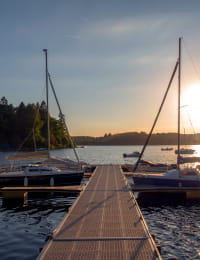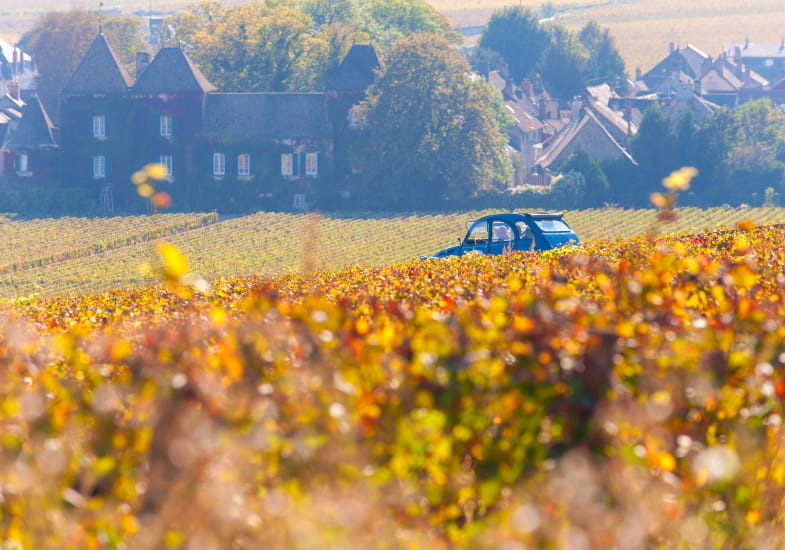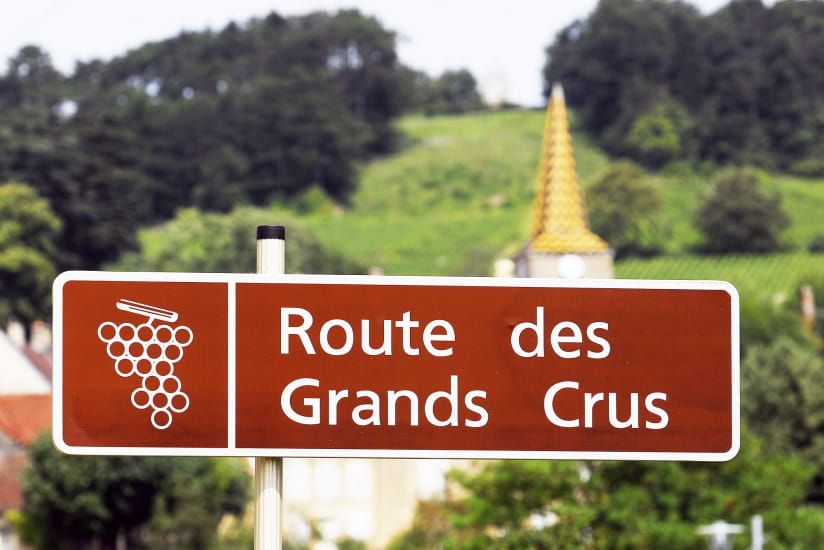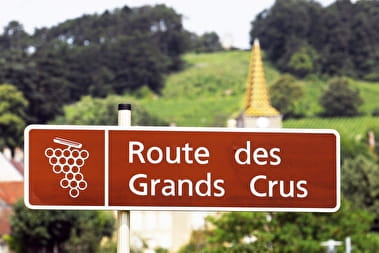The Route des Grands Crus de Bourgogne
This is the ultimate route to take if you want to get the full experience of the Burgundy vineyard and its most well-known appellations. You'll be discovering some great wines, great food, heritage sites, nature and the "Climats" of Burgundy's vineyard, for a rich and varied experience that is guaranteed to be unforgettable!
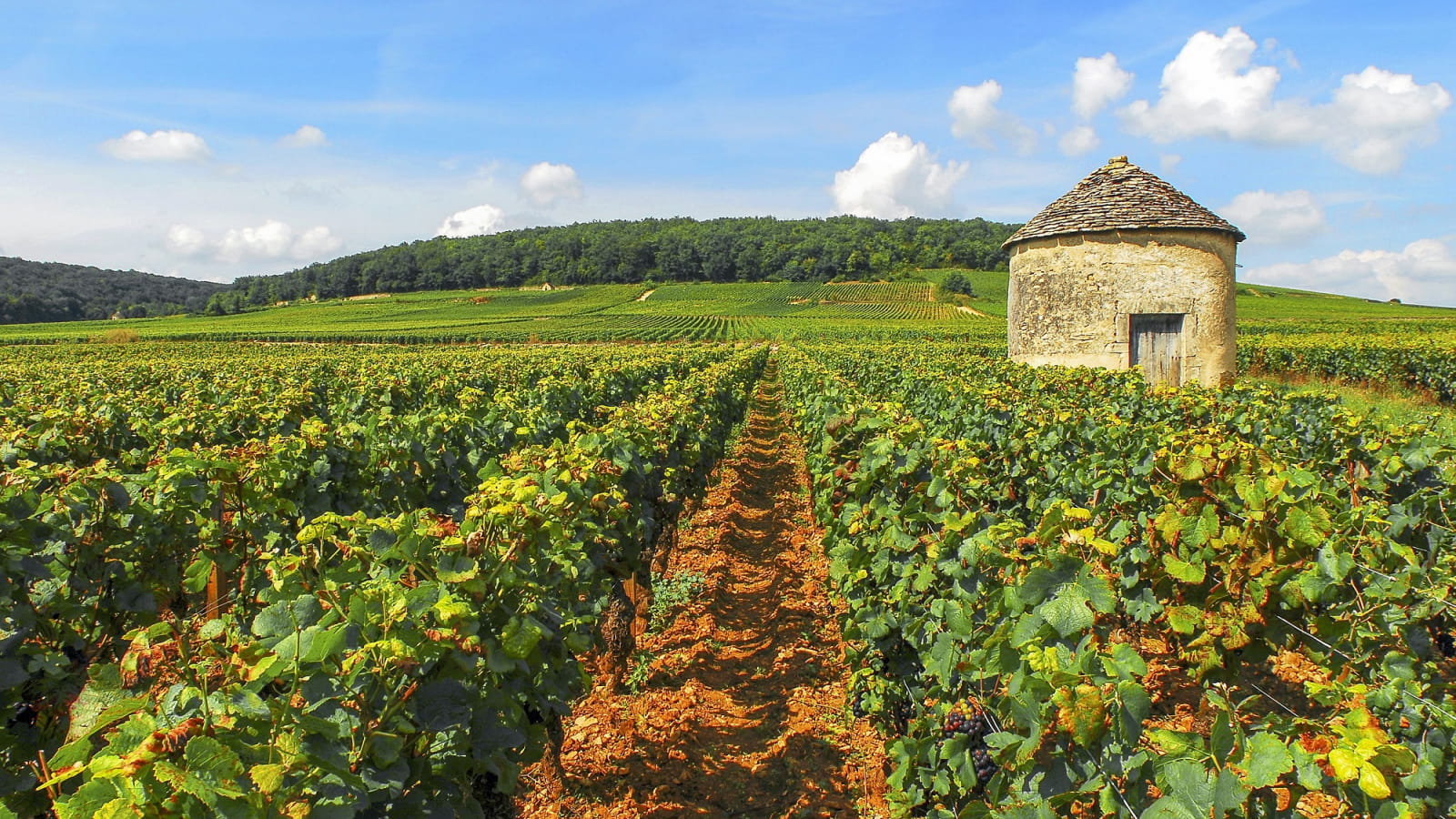
Prestigious winemaking heritage
This route was created in 1937, and was the very first French wine route. This marked the creation of the all-round notion of sightseeing for a vineyard.
From Dijon to Beaune, and then to Santenay, you'll be admiring the winegrowing hillsides that stretch as far as the eye can see. These vineyards were created a thousand years ago and are the result of a perfect blend between mankind and nature.
All the vineyards along this route are classified by UNESCO. They form the "Climats": a mosaic of little vine plots, each one unique thanks to its relief, exposure, geology, local know-how, etc. It's not surprising that this vineyard produces the greatest wines in the world!

Not-to-be-missed in the northern section of the Route des Grands Crus

Dijon
To see and do in the capital of the Dukes of Burgundy: visit the Fine Arts Museum with the tombs of the dukes, follow the Parcours de la Chouette (Owl Trail) to explore the town on foot, before setting off again along the wine route.
Find out more
Gevrey-Chambertin
Go up to the highest point of the village to admire the view of this very famous, but still very peaceful village. An unmissable stop: Halle Chambertin to unveil the secrets of the village of 9 Grands Crus thanks to the fun and interactive explanations, and a commented tasting session.
Halle ChambertinClos Vougeot and Aloxe-Corton

Vougeot
Small village known for the Château du Clos de Vougeot that was built by Cistercian monks.
This huge, exceptional monument can't be missed along this route, and is the capital of the Confrérie des Chevaliers du Tastevin (Fraternity of Knights of the Wine-Tasters' Cup).
Château du Clos de Vougeot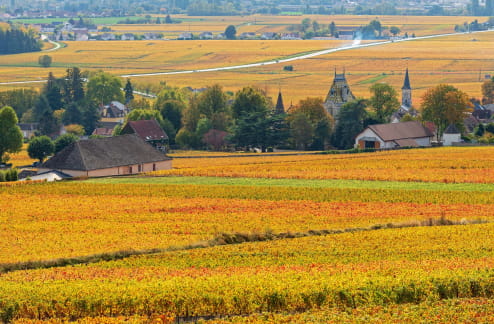
Aloxe-Corton
Corton mountain is in between the Côte de Nuits and the Côte de Beaune, and you'll notice a slight change in the landscape here.
On these very slopes, a part of the Grand Cru Corton-Charlemagne appellation is produced, and the name comes from the vine that was gifted by the famous emperor.

Have you heard of the "clos" and the "cabotes"
While you're exploring the area, you'll most likely come across the "clos" and "cabottes".
The "clos" are vine plots that are surrounded by walls. At the entrance to these plots there is sometimes an archway bearing the name of the vintage wine and the winegrowing estate that owns the plot.
The "cabotes" are small shelters made from dry stone or built with bricks, in the middle of the vineyards where winegrowers would take shelter, rest, and have something to eat.
Not-to-be-missed in the southern section of the Route des Grands Crus

Beaune
The number one place to visit in this town is the ancient Hôtel-Dieu and superb architecture, home to the Fondation Hospitalière des Hospices de Beaune in the Middle Ages. And to find out all there is to know baout the Burgundy vineyard and its "terroir", come to the Maison des Climats.
Visit Beaune
Chassagne-Montrachet and Puligny-Montrachet
Towns that are famous for their five white Grands Crus: Montrachet, Bâtard-Montrachet, Chevalier-Montrachet, Bienvenues-Bâtard-Montrachet and Criots-Bâtard-Montrachet.
Discover the Côte de Beaune
